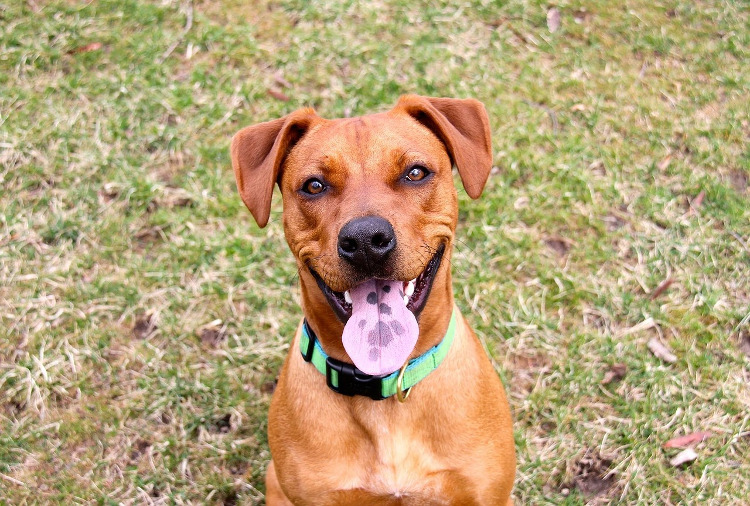![]()
Itchiness (also called pruritus) is the sensation that induces an animal or human to itch itself locally or over large areas of the skin. It can be caused by various ailments including underlying allergies, skin infection by bacteria or yeast, as well as due to sudden trauma such as an insect bite. Itchiness in dogs comprises of not just the use of paws to scratch a part of the body, but also other methods such as licking an area excessively, chewing or biting of skin, rubbing against a carpet, a wall or the floor (typically, itch of the face can induce such itchiness behavior) or scooting the hind end on the carpet or floor. Head shaking is another form of itchiness that is specific to ear discomfort or itchiness. If you have to ask your dog to stop itching itself using the “No” or “Stop” command, there is likely need for veterinary attention and a trip to the vet clinic is warranted.
While all healthy dogs may exhibit some of these behaviors occasionally, a repetitive pattern or overzealous attention to the skin is usually a sign that your pet is itchy. A head shake once a week or a body shake right after swimming, or licking of the paws for a minute or two after a walk can be regarded as normal whereas regular rubbing of the face or biting of the paws are suggestive signs of an ongoing itch.
Symptoms of itchiness may be localized or generalized with most patients showing a combination of the signs including rubbing, licking, chewing, scratching, head-shaking and scooting.
The Owner-Assessed Itchiness Scale:
If you are curious to assess how itchy your dog may be, a valuable tool to help assess the degree of itchiness that pet owners can use is the Pruritus Visual Analog Scale. On the scale of 1 to 10, a score of 1 or 2 would indicate a normal, non-itchy dog whereas a score of 3 or higher indicates itchiness. Remember, the degree of itchiness can vary from day to day, week to week and even based on the season especially for dogs with seasonal allergies to the environment. Also, upon seeing the scale and assessing you dogs’ itch, if there is controversy about the true itchiness levels of your pet (I.e., two people on the family are assigning different scores!!), this is not entirely a surprise as different individuals can grade the itch levels different based on observation and how much time they spend with or around the dog.
Do Dogs Groom Themselves?
Yes, but only a little compared to cats. While cats are known to be self-groomers and spend a large amount of their time grooming themselves, dogs do not exhibit this behavior as they are from a different species altogether.
A dog incessantly licking itself is an itchy dog, even if it looks comfortable on casual observation.
While dogs do have self-grooming habits, if they are doing so for long durations like cats, it could mean it is time for a trip to your veterinarian. Usually, evidence of excessive self grooming can be a sign that your dog needs to see the vet, especially if they’re licking themselves for more than just a few seconds a day, or if their skin looks red and itchy, or if they’re constantly pawing at their own eyes and ears. A couple of methods of self-grooming in dogs include the following:
Self-Bathing: The Wash Cloth
A dog will lick its paws thoroughly, then proceed to wipe every part of its face with their paws and make sure not to miss a spot. They spend only a few seconds doing this; any longer, or if it’s done more frequently than not, and you could be seeing signs of a possible allergy or a skin problem.
Doggie Towel: The Body Shake/Rinse Cycle
Did you know that in about 4 seconds, the average dog is able to remove 70% of water from their fur? The dog’s full body shake is that effective in removing dirt and other such debris from their coat, as well as dry themselves within minutes after being immersed in water or mud, or just after a bath.
Did you also know that dogs have nerve receptors on their hair follicles? This helps them to detect any foreign substances that may be stuck to their coat. By shaking their body, a dog generates enough heat to allow for the water to evaporate so they can dry quickly. The next time you see your dog shake its body from head to tail, you’ll know they’re just drying off.
How Often Should I Get My Dog Groomed?
This is a personal choice and is based on a number of factors. Dog grooming is an essential part of care for our canine companions. The need and method for dog grooming can vary quite a bit based on the breed, type of hair coat as well as your pets’ lifestyle. While Standard Poodle, Bichon Frise’ or Afghan Hound dogs need regular grooming and upkeep, Boxers or Miniature Pinschers may do fine with less frequent grooming. It goes without saying that more active, outdoor dogs will need more ongoing care compared to a dog of the same breed that is spending most of its time indoors on your couch within the clean home environment. Within the same breed, the type of hair coat can affect the frequency and need for grooming, for example the needs of a long-haired Chihuahua definitely vary compared to a short-haired Chihuahua.
Some longer haired dogs may need to be groomed more often as they may get hair tangles or may get mats between the toes, which can cause discomfort. The rate of nail growth can also help determine the frequency of grooming needed for a pet. Older dogs may need more frequent grooming including nail trims as their nails can grow out faster, especially if they are not as active as they used to be in their younger, more active years.
If in doubt, it is best to check with your local dog groomer what the recommendation for your dogs is.
Some pet owners learn to groom the pet at home themselves based on their comfort levels with certain procedures. Whether it is daily brushing of the hair coat, occasional baths, or full on dog grooming at home, time spent taking care of your pet strengthens the bond with your dog and is also a good way to pursue a checkup to make sure everything is in order and your dog is comfortable.
Creative Commons Attribution: Permission is granted to repost this article in its entirety with credit to VetDERM Clinic and a clickable link back to this page.

Dr. Jangi Bajwa is a Board certified veterinary dermatologist at VetDERM Clinic in Surrey BC. He is also the dermatology feature editor for Canadian Veterinary Journal. Dr. Bajwa’s special interests include otitis and allergic disease in pets; as well as helping improve quality of life of pets and their families.



 by
by